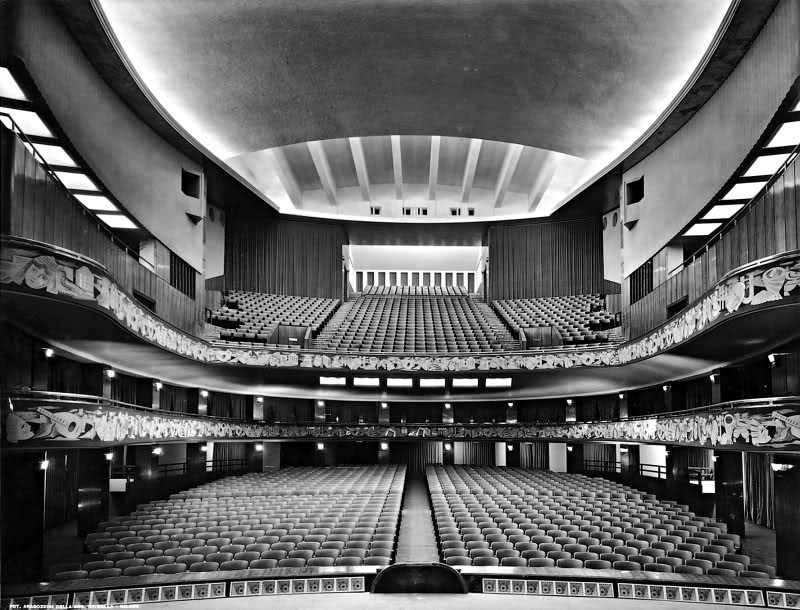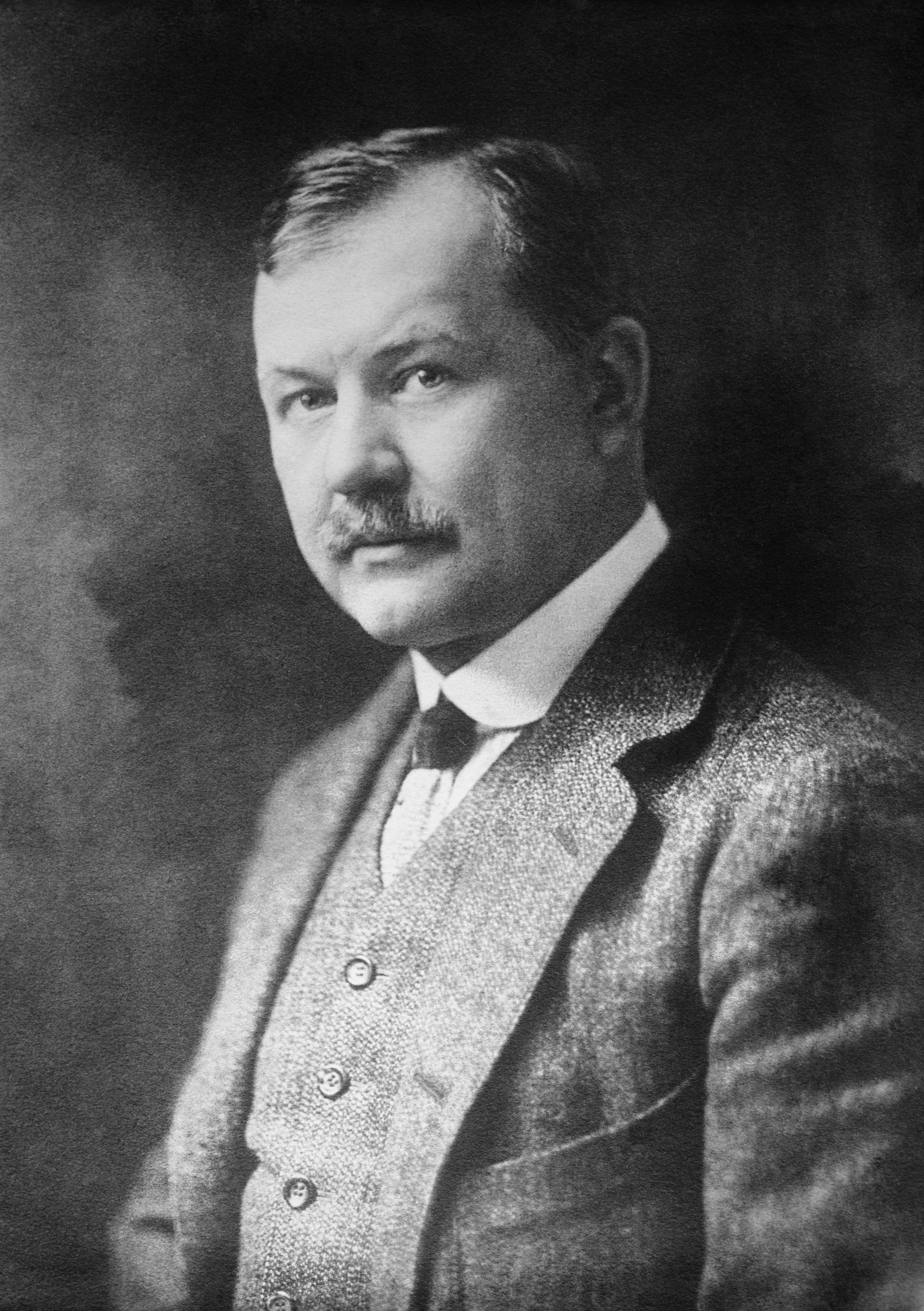|
Carlo Lombardo
Carlo Lombardo dei Baroni Lombardo di San Chirico (Naples, 28 November 1869 – Milan, 19 December 1959) known also under the composer-pseudonyms Léon Bard, Leo Bard, Leblanc and M. Fernandez, was an Italian operetta impresario, comedian, librettist, publisher and "composer" of pasticcio productions of other composers' music. He is regarded in Italy as the father of the late 19th and early 20th Century revival in Italian operetta. Lombardo was responsible, in a somewhat debatable manner, for getting Pietro Mascagni to write the operetta '' Sì''. His brother was the conductor and composer Costantino Lombardo. His publishing house, Lombardo Editore, continues to publish sheet music for operettas. Operettas and pasticcios *''La Regina del Fonografo (The Queen of the Phonograph)'', music Carlo Lombardo (Leon Bard), libretto Carlo Lombardo e Gil Blas, ca. 1915 *''La duchessa del Bal Tabarin'', 1917 *''Madama di Tebe'', libretto and music by Lombardo, Milan, 7 March 1918 *'' Sì'', ... [...More Info...] [...Related Items...] OR: [Wikipedia] [Google] [Baidu] |
Teatro Quirino
The Teatro Quirino is an opera house in Rome opened in 1871. It hosted the premiere of Pietro Mascagni's operetta '' Sì''. Its historical name has been joined by the recognition for one of the most acclaimed Italian theatrical actors of the twentieth century, Vittorio Gassman. The full name of the theater is, in fact, Teatro Quirino - Vittorio Gassman. It is located in the Trevi district. From July 2014, management passed to a private company made up of sector operators whose CEO is Rosario Coppolino; Artistic consultants are Geppy Gleijeses and Guglielmo Ferro. History The theater was built in 1871 at the behest of Prince Maffeo Barberini Colonna di Sciarra, who decided to entrust the project to the architect Giulio De Angelis, assisted by his colleague Francesco Marra (or Morra). The place chosen was inside the Sciarra Colonna palace, owned by the prince, with the main entrance from Via del Corso and extended up to the Trevi fountain. Taking advantage of the loss of the ci ... [...More Info...] [...Related Items...] OR: [Wikipedia] [Google] [Baidu] |
1869 Births
Events January–March * January 3 – Abdur Rahman Khan is defeated at Tinah Khan, and exiled from Afghanistan. * January 5 – Scotland's oldest professional football team, Kilmarnock F.C., is founded. * January 20 – Elizabeth Cady Stanton is the first woman to testify before the United States Congress. * January 21 – The P.E.O. Sisterhood, a philanthropic educational organization for women, is founded at Iowa Wesleyan College in Mount Pleasant, Iowa. * January 27 – The Republic of Ezo is proclaimed on the northern Japanese island of Ezo (which will be renamed Hokkaidō on September 20) by remaining adherents to the Tokugawa shogunate. * February 5 – Prospectors in Moliagul, Victoria, Australia, discover the largest alluvial gold nugget ever found, known as the "Welcome Stranger". * February 20 – Ranavalona II, the Merina Queen of Madagascar, is baptized. * February 25 – The Iron and Steel Institute is formed in Lon ... [...More Info...] [...Related Items...] OR: [Wikipedia] [Google] [Baidu] |
Zarzuela
() is a Spanish lyric-dramatic genre that alternates between spoken and sung scenes, the latter incorporating operatic and popular songs, as well as dance. The etymology of the name is uncertain, but some propose it may derive from the name of a royal hunting lodge, the Palace of Zarzuela, near Madrid, where that type of entertainment was allegedly first presented to the court. The palace in turn was named after the brambles () that grew there. There are two main forms of ''zarzuela'': Baroque ''zarzuela'' (c. 1630–1750), the earliest style, and Romantic ''zarzuela'' (c. 1850–1950). Romantic zarzuelas can be further divided into two main subgenres, ''género grande'' and ''género chico'', although other sub-divisions exist. ''Zarzuela'' spread to the Spanish dominions, and many Spanish-speaking countries – notably Cuba – developed their own traditions. ''Zarzuela'' is also a strong tradition in the Philippines, where it is also referred to in certain ... [...More Info...] [...Related Items...] OR: [Wikipedia] [Google] [Baidu] |
Teatro Lirico (Milan)
The Teatro Lirico (known until 1894 as the Teatro alla Canobbiana) is a theatre in Milan, Italy. In the 19th and early 20th centuries it hosted numerous opera performances, including the world premieres of Donizetti's '' L'elisir d'amore'' and Giordano's '' Fedora''. The theatre, located on Via Rastrelli, closed in 1998. However, a restoration project was begun in April 2007, and it has finally re-opened in December 2021 as the Teatro Lirico Giorgio Gaber. Stage Entertainment carried on the renovation of the Theatre, completing all finishes and all workings started by the administration "Comune di Milano". History The Teatro Regio Ducale, the court theatre of the Royal Palace of Milan, was destroyed by fire on February 26, 1776. With the city deprived of its only theatre, Giuseppe Piermarini was commissioned to design and build two new theatres on land surrounding the Palace. The church of Santa Maria della Scala was demolished to build the Teatro alla Scala. A second theatre w ... [...More Info...] [...Related Items...] OR: [Wikipedia] [Google] [Baidu] |
Virgilio Ranzato
Virgilio Ranzato (May 7, 1882 in Venice – April 20, 1937 in Como) was an Italian composer and violinist.Guido Ceriotti -Storia sociale e culturale d'Italia: Lo spettacolo 1987 - Page 276 "Molto numerosa è la produzione del più giovane Virgilio Ranzato (1883-1937), che, insieme al Paese dei campanelli, scrisse, ancora su testo di Lombardo, Cin-Ci-Là (1928), operetta di ambientazione esotica e soffusa d'ingenuo erotismo, ..." Biography Ranzato began his career firstly as violin player on the Conservatory in Venezia and Milan. Later he studied musical composition as well. Than he worked mostly as chamber music player or conductor. From around 1910 he worked mostly as a composer, and besides others he wrote an opera ''Campane di guerra'' (1933, Milan), and several operettas. Ranzato served as concertmaster for the LaScala Orchestra under Arturo Toscanini. He made several recordings on the Pathe label. Works * :it:Il paese dei campanelli (Milan, 1923) libretto Carlo Lombardo * ... [...More Info...] [...Related Items...] OR: [Wikipedia] [Google] [Baidu] |
Franz Lehár
Franz Lehár ( ; hu, Lehár Ferenc ; 30 April 1870 – 24 October 1948) was an Austro-Hungarian composer. He is mainly known for his operettas, of which the most successful and best known is ''The Merry Widow'' (''Die lustige Witwe''). Life and career Lehár was born in the northern part of Komárom, Kingdom of Hungary (now Komárno, Slovakia), the eldest son of Franz Lehár (senior) (1838–1898), an Austrian bandmaster in the Infantry Regiment No. 50 of the Austro-Hungarian Army and Christine Neubrandt (1849–1906), a Hungarian woman from a family of German descent. He grew up speaking only Hungarian until the age of 12. Later he put an acute accent above the "a" of his father's surname "Lehár" to indicate the vowel in the corresponding Hungarian orthography. While his younger brother Anton entered cadet school in Vienna to become a professional officer, Franz studied violin at the Prague Conservatory, where his violin teacher was Antonín Bennewitz, but was ad ... [...More Info...] [...Related Items...] OR: [Wikipedia] [Google] [Baidu] |
Mario Pasquale Costa
Mario Pasquale Costa (24 July 1858 –27 September 1933) was a prolific Italian composer primarily known for his art songs, Neapolitan songs, and operettas. Costa was born in Taranto to Angelo and Maria Giuseppa ''née '' Malagisi. His father was a customs official, but the Costa family numbered several notable composers and musicians, including Costa's uncle Michael Costa and his great-grandfather Giacomo Tritto. Costa studied composition, piano and singing at the San Pietro a Maiella Conservatory in Naples under another uncle Carlo Costa, Paolo Serrao, and Giuseppe Martucci.Meloncelli, Raoul (1984)"Costa, Pasquale Antonio Cataldo Maria" ''Dizionario Biografico degli Italiani'', Vol. 30. Treccani. Online version retrieved 18 December 2017 .Sanvitale, Francesco (2002''La romanza italiana da salotto'' pp. 302–305. EDT srl. By the age of 17, Costa had already published numerous art songs. Possessed of an attractive tenor voice, he often performed them himself for the fir ... [...More Info...] [...Related Items...] OR: [Wikipedia] [Google] [Baidu] |
Costantino Lombardo
Costantino is both a masculine Italian given name and an Italian surname. Notable people with the name include: People with the given name *Costantino Affer (1906–1987), Italian medallist *Costantino Barbella (1853–1925), Italian sculptor *Costantino Bresciani Turroni (1882–1963), Italian economist and statistician *Costantino de Castro, 11th-century Italian Roman Catholic bishop * Costantino Catena (born 1969), Italian classical pianist *Costantino Cedini (1741–1811), Italian painter *Costantino Corti, 19th-century Italian sculptor *Costantino D'Orazio (born 1974), Italian art critic and curator *Costantino Fiaschetti, 18th-century Italian architect *Costantino De Giacomo, Italian physician *Costantino Lazzari (1857–1927), Italian politician * Costantino Nigra (1828–1907), Italian diplomat *Costantino Nivola (1911–1988), Italian sculptor *Costantino Pasqualotto (1681–1755), Italian painter *Costantino Patrizi Naro (1798–1876), Italian cardinal *Costantino Rocca (bo ... [...More Info...] [...Related Items...] OR: [Wikipedia] [Google] [Baidu] |
Naples
Naples (; it, Napoli ; nap, Napule ), from grc, Νεάπολις, Neápolis, lit=new city. is the regional capital of Campania and the third-largest city of Italy, after Rome and Milan, with a population of 909,048 within the city's administrative limits as of 2022. Its province-level municipality is the third-most populous metropolitan city in Italy with a population of 3,115,320 residents, and its metropolitan area stretches beyond the boundaries of the city wall for approximately 20 miles. Founded by Greeks in the first millennium BC, Naples is one of the oldest continuously inhabited urban areas in the world. In the eighth century BC, a colony known as Parthenope ( grc, Παρθενόπη) was established on the Pizzofalcone hill. In the sixth century BC, it was refounded as Neápolis. The city was an important part of Magna Graecia, played a major role in the merging of Greek and Roman society, and was a significant cultural centre under the Romans. Naples served a ... [...More Info...] [...Related Items...] OR: [Wikipedia] [Google] [Baidu] |
Sì (operetta)
''Sì'' is an operetta in three acts composed by Pietro Mascagni to a libretto by Carlo Lombardo with verses by Arturo Franci. The libretto is based on Lombardo's operetta ''La duchessa del Bal Tabarin'' and libretto for ''Majestät Mimi'' set by Bruno Granichstaedten in 1911. Mascagni's only venture into operetta, it premiered on 13 December 1919 at the Teatro Quirino in Rome. The operetta takes its name from its central character, Sì, an actress at the Folies Bergère, so called because she could never say no. ("Si" is the Italian word for "yes".) Background and performance history The friendship of Mascagni and his librettist, Carlo Lombardo, dated from 1885 when both were working as conductors for Alfonso and Ciro Scognamiglio's travelling operetta company. Mascagni went on to devote himself to composing operas, while Lombardo specialised in operetta as a composer, librettist, and impresario. He directed the Calligaris-Lombardo operetta company and also founded Casa Lombardo, ... [...More Info...] [...Related Items...] OR: [Wikipedia] [Google] [Baidu] |
Pietro Mascagni
Pietro Mascagni (7 December 1863 – 2 August 1945) was an Italian composer primarily known for his operas. His 1890 masterpiece ''Cavalleria rusticana'' caused one of the greatest sensations in opera history and single-handedly ushered in the ''Verismo'' movement in Italian dramatic music. While it was often held that Mascagni, like Ruggero Leoncavallo, was a "one-opera man" who could never repeat his first success, ''L'amico Fritz'' and ''Iris'' have remained in the repertoire in Europe (especially Italy) since their premieres. Mascagni wrote fifteen operas, an operetta, several orchestral and vocal works, and also songs and piano music. He enjoyed immense success during his lifetime, both as a composer and conductor of his own and other people's music and created a variety of styles in his operas. Biography Early life and education Mascagni was born on 7 December 1863 in Livorno, Tuscany, the second son of Domenico and Emilia Mascagni. His father owned and operated a baker ... [...More Info...] [...Related Items...] OR: [Wikipedia] [Google] [Baidu] |




